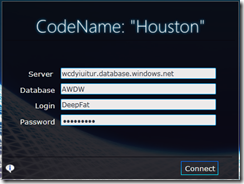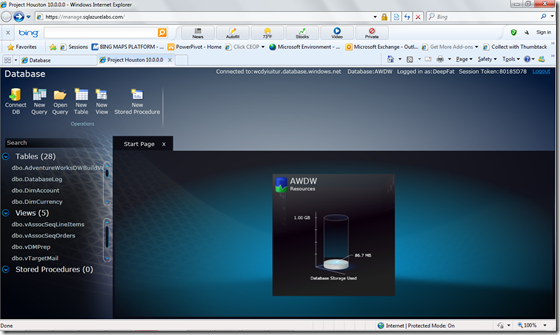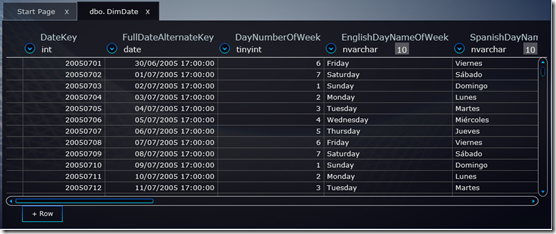Managing SQL Azure
Effective management of the cloud is essential, and SQL Azure is no exception to this. Until a couple of days ago the only way to do this was to fire up SQL Server Management Studio in SQL Server 2008 R2. However the Azure team have now released a public beta of Project Houston a lightweight web based management console.
I simply connect..
to get a screen full of Silverlight loveliness…
I can then do all the basic stuff I need with my database, such as view and modify table designs, run and save queries and create new table, view and stored procedures. Here I am looking at the data in dimDate..
from where I can also add and delete rows.
The more astute among you will realise that despite the gloss, the tool is quite basic at the moment. I agree entirely but I would emphasise the ‘at the moment’ in the above statement. One of the game changing things about cloud based solutions is that they are regularly refreshed and because they are cloud based I can use the new version this straight away as there’s nothing to deploy. In the case of SQL Azure This rate of change is unique for any database platform. For example since it’s launch in January, SQL Azure has added spatial data type support and is now available as a 50Gb offering, in addition to this new management tool.
Apart from that SQL Azure is really really boring as you just use it like any other SQL Server Database, and when it comes to databases boring is good.


